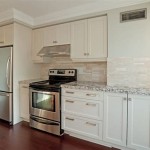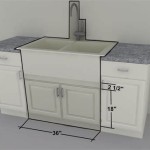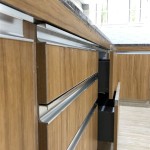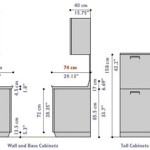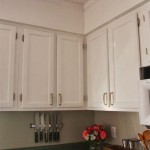Carcass Material for Kitchen Cabinets: Essential Aspects to Consider
Kitchen cabinets are the backbone of any kitchen design, providing both functionality and aesthetic appeal. The carcass, the main structure of the cabinet, plays a crucial role in determining the durability, longevity, and overall performance of the cabinetry. Choosing the right carcass material is essential to ensure a kitchen that meets your needs and stands the test of time.
Types of Carcass Materials
There are several types of carcass materials available for kitchen cabinets, each with its own unique characteristics:
- Plywood: Constructed from layers of thin wood veneers bonded together, plywood offers excellent strength, durability, and stability. It is moisture-resistant and less prone to warping or bowing.
- Particleboard: Made from wood chips and resin, particleboard is an affordable and versatile option. However, it can be less durable than plywood and is susceptible to moisture damage.
- Melamine: A type of particleboard covered with a durable laminate, melamine is resistant to moisture, scratches, and heat. It is also available in a wide range of colors and finishes.
- MDF (Medium Density Fiberboard): Similar to particleboard, MDF is made from wood fibers but is denser and more durable. It is moisture-resistant and provides a smooth surface for painting or finishing.
- Solid Wood: The most expensive and luxurious option, solid wood cabinets offer unmatched durability and beauty. They are resistant to wear and tear but require regular maintenance to prevent moisture damage.
Factors to Consider When Choosing a Carcass Material
When selecting a carcass material for kitchen cabinets, it is important to consider the following factors:
- Durability: Choose a material that can withstand the wear and tear of daily use and moisture exposure.
- Moisture Resistance: If you live in a humid climate or have a steamy kitchen, opt for a moisture-resistant material like plywood, melamine, or MDF.
- Cost: Carcass materials range in price from budget-friendly (particleboard) to high-end (solid wood). Determine your budget before making a decision.
- Aesthetics: The carcass material should complement the overall design and style of your kitchen. Consider the color, texture, and finish of the material.
Conclusion
Choosing the right carcass material for kitchen cabinets is a crucial step in creating a durable, functional, and beautiful kitchen. By considering the types of materials available, the factors to consider, and your specific needs, you can make an informed decision that will ensure the longevity and satisfaction of your kitchen investment.

Plywood Carcass Material Acrylic Modular Kitchen Cabinets

Kitchen Cabinet Carcass Guide Why A High Quality Is Essential Lasting

7 Best Kitchen Cabinet Materials To Protect You From Poor Quality Horrors

Kitchen Cabinets Design Materials Smith

9 Popular Kitchen Cabinet Materials In Malaysia

Carcass Plywood Mdf Particle Board Modular Kitchen Cabinet Designs For Project China Cabinets Pet Made In Com

7 Best Kitchen Cabinet Materials To Protect You From Poor Quality Horrors

A Guide To Materials And Finishes For Kitchen Designcafe

Plywood Carcass Material Acrylic Modular Kitchen

Which Alternative Materials Could I Use For My Kitchen Carcasses Houzz Ie
Related Posts

